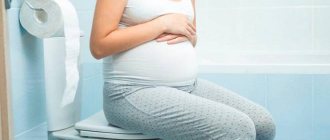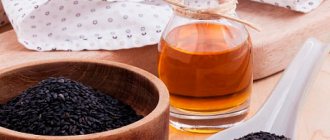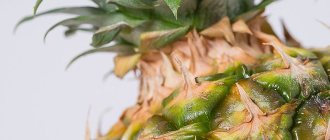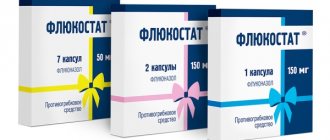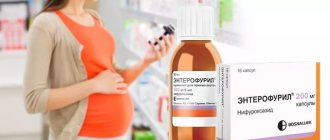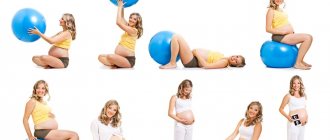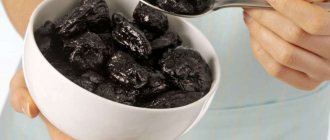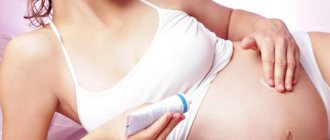The desire to be well-groomed and attractive is inherent in every woman. Expectant mothers also strive to look great even during such a special period of life as carrying a little person.
Modern cosmetology offers a lot of different procedures for skin and body care. One of the questions that almost every girl has is the removal of excess hair. And if before the onset of an interesting situation, a woman had complete freedom in choosing a depilation technique, then the presence of a toddler in her tummy makes its own adjustments, including in matters of self-care.
Sugaring during pregnancy - introduction to the procedure
One of the ways to remove hair for a long period is to carry out the sugaring procedure. This manipulation also has another name – sugar hair removal. The main component of the product is sugar. To remove hairs, you need to cover the problem area with sugar paste, and then pick it off. Along with the sugar strip, unwanted vegetation is also torn off.
- The epilation area is treated with an antiseptic drug (for example, Chlorhexidine solution).
- In some cases, if there is increased sensitivity, a local anesthetic may be applied to the affected area (although in cases of pregnant women, increased sensitivity is a signal to refrain from this type of hair removal).
- A fragment of caramel paste is kneaded in the hands and then applied to the epidermis in the direction opposite to hair growth.
- Having carefully distributed the sticky strip, the master (or the woman herself) tears it off as the hair grows.
- After sugaring is completed, an antiseptic is again applied to the treated skin, followed by a soothing cream.
You can make the sweet sticky mixture yourself or purchase a ready-made paste. Sugaring is not exclusively a salon procedure. Sugar hair removal can also be done at home, although it requires some skill and compliance with a number of rules. If we are talking about expectant mothers, then it is better to trust a specialist rather than conduct home experiments. Sugar wax will remove unsightly hairs for 10-20 days.
What is sugaring, advantages
Bioepilation is a method that, without damaging the skin, allows you to get rid of hair from any part of the body by applying a natural sugar paste. Excess vegetation is removed with sticky caramel. After removal, hairs with roots remain on the paste.
Sugaring paste
Benefits of sugaring:
- The composition of the paste is considered a natural product, so it can be used by almost everyone. The product is considered hypoallergenic, there are no side effects. The exception is people who are intolerant to lemon juice and sugar;
- You can remove hairs with caramel paste from any part of the body (arms, legs, armpits, bikini area). You just need to choose the right composition of the required density for the job;
- The procedure is relatively inexpensive compared to alternative methods of hair removal. If there is a sugar composition, the procedure is performed independently at home, following hair removal technology;
- The skin is not injured during sugaring, eliminating the risk of infection in the body;
- The hairs begin to grow after 21 days, becoming sparse and soft. The procedure allows you to avoid problems with ingrown hairs;
- During the process of pulling out hairs, moderate pain is felt. They are tolerated quite easily, even on delicate areas of the skin. Each time the pain decreases, as there are significantly fewer hairs.
Sugaring paste
Sugaring refers to the procedure of removing excess hair from the body using a special sugar-containing substance (paste). The procedure can be carried out both in the salon and at home. It is strongly recommended to resort to the latter option only if you have the appropriate experience and skills.
Sugaring
The essence of the manipulation is as follows: a certain area (most often the bikini area, arms, legs, face or armpits), covered with unnecessary hairs, is treated with a sugar substance. Due to the fact that the sugaring paste has a thick texture, it completely envelops the skin. It is removed from the surface with a quick and sharp movement of the hand.
This type of hair removal has a number of undoubted advantages:
- natural composition;
- hypoallergenic;
- no skin irritation;
- low pain of the procedure;
- completely eliminating the possibility of getting a thermal burn;
- absence of ingrown hairs after the procedure;
- ease of preparing pasta (including at home);
- relatively low cost.
Sugaring during pregnancy
Hair removal using sugar paste - sugaring - is a fairly safe and painless hair removal technique. The natural composition, minimal trauma to the skin and long-term preservation of the achieved effect have made it especially popular among expectant mothers. The relevance of the problem of excess hair during the period of waiting for a baby often increases for another reason. An increase in the level of the “pregnancy hormone” - progesterone - in a woman’s body leads not only to increased hair growth, but also to the appearance of unsightly hair in new places (on the face, stomach).
Sugaring in the first trimester of pregnancy
In the first weeks of waiting for the baby, the female body and the little life that has arisen in it are especially vulnerable. That is why the expectant mother should try to avoid any stressful situations as much as possible. In this case, the stress factor is the pain syndrome that accompanies the sugar hair removal procedure, because not only the visible part of the hair is removed, but also its bulb. Painful sensations can lead to increased tone of the uterus and, as a result, jeopardize the further development of pregnancy. Even if a woman practiced caramel hair removal before the waiting period for a baby, it is better to hold off on sugaring during early pregnancy. This statement is especially categorical regarding the treatment of the bikini area. Some expectant mothers, fearing that a cosmetologist will refuse to perform caramel hair removal, hide the fact of pregnancy. This is strictly forbidden, since the price of carelessness can be pregnancy.
Sugaring during late pregnancy
The safest and most favorable period for any kind of manipulation, including caramel hair removal, is the second and first half of the third trimester. On the eve of meeting the baby, a woman’s body again requires a more reverent and attentive attitude towards itself. Sugaring during the 9th month of pregnancy, especially in the bikini area, can trigger labor. If the pregnancy is full-term or there are only a few days left before the onset of pregnancy, sugar hair removal can be carried out without any particular concerns (1-2 days before the expected onset of labor, manipulation should no longer be performed).
Sugaring deep bikini
The deep bikini is one of the most sensitive areas of the human body. And during pregnancy, the pain threshold decreases. So even if a woman usually tolerates this procedure quite calmly, during pregnancy she may experience serious discomfort. Moreover, the use of anesthesia is not indicated for everyone and is generally undesirable. It goes without saying that if sugaring has never been done before, it’s definitely not worth starting during pregnancy, and even in a deep bikini.
It is also important that during hair removal the woman will have to spend about an hour lying on her back. This in itself can cause inconvenience and cause circulatory problems in the later stages (since the uterus and fetus will put pressure on the main large vessels of the woman’s body).
It is not recommended to perform deep bikini hair removal in the early stages due to the pain and unpredictable reaction of the mother and child to it. Therefore, the most popular and safest method at this time is still depilation with a razor. It won't require as much time and will be painless.
If hair removal is still carried out, the woman should monitor her condition very carefully. Dizziness, headache, abdominal or lower back pain, increased activity of the fetus - these signs indicate that the procedure must be stopped.
Features of sugaring during pregnancy
Removing excess hair from a particular area of the body is accompanied by more severe or minor pain. In the absence of contraindications from the woman’s health, the only requirement is the required hair length – at least 4 mm. Otherwise, the paste will not be able to “grab” the hair.
Sugaring bikini during pregnancy
Hair removal in the intimate area is not only a delicate procedure, but also quite painful, especially when it comes to a deep bikini. This is why many specialists in beauty salons often refuse expectant mothers to perform deep bikini sugaring during pregnancy. In addition to the possible threat of pregnancy itself, there is, albeit a small, risk of infection. During caramel hair removal, the hair is completely removed, along with the bulb. The result is the appearance of skin microtraumas. If disinfection is insufficient, pustular lesions may appear. Before any procedures, a woman should consult a doctor who is managing her pregnancy. Beauty should never come at the expense of health.
Sugaring of feet during pregnancy
The most painless area for hair removal is the legs. Even sugar stripes won't cause too much discomfort. And if even women experienced in this matter should be careful when removing hair in the intimate area by sugaring, then almost everyone can treat their legs with caramel paste. The exception is the presence of medical contraindications. In addition, a woman can ensure ideal smoothness of her legs on her own right up until the birth of her baby.
Is it possible for expectant mothers to undergo sugar depilation?
Dates of pregnancy
Bioepilation should be comfortable in order to minimize discomfort during the process of pulling out hairs.
Rules for bioepilation
Sugar hair removal technology during pregnancy, general recommendations:
- The master must be warned about the gestational age. During hair removal, the cosmetologist wears gloves;
- The skin must be treated with an antiseptic (chlorhexidine, miramistin). Intimate areas are treated especially carefully;
- Apply sugar paste cold;
- The composition is applied against hair growth so that it penetrates well into the hair follicles. Remove the paste according to hair growth in one quick movement. Incorrect actions when removing the composition can lead to the appearance of wounds or microcracks, which is undesirable for pregnant women;
- To reduce pain during sugaring during pregnancy, the skin must be stretched;
- The zone is processed once. Do not reapply the paste and remove remaining hairs;
- After pulling out the hairs, the skin is again treated with an antiseptic. If desired, apply a soothing agent (oil, lotion, cream).
On a note. When performing work on sensitive skin areas, local anesthetics are sometimes used. Their use is not recommended during pregnancy.
We suggest you read: What to do with varicose veins on the legs during pregnancy
Bioepilation is the safest way to deal with body hair during pregnancy. If it is performed for the first time, it is possible that hair removal will be painful.
Sugaring and pregnancy: restrictions on the procedure
Pregnancy is not the best time for any kind of experimentation. That is why, if a woman has not previously undergone sugar hair removal, it is better to try this method of hair removal after the baby is born. In addition, the following may become an obstacle to sugar hair removal:
- The presence of an individual allergic reaction. This problem can arise when using formulations with a honey base.
- When applying sugar paste, you should avoid areas with moles, warts, and spider veins.
However, even if the expectant mother has previously repeatedly performed sugar hair removal and has no obvious contraindications to the procedure, she should definitely consult a gynecologist before carrying out the manipulation. Absolute contraindications to sugaring are:
- Increased uterine tone.
- The risk of early termination of pregnancy.
- A history of pregnancy failure.
- Exacerbation of chronic pathologies.
- Toxicosis.
- Foci of inflammation on a woman's skin.
- The presence of pathologies of the endocrine system also imposes restrictions on the use of sugaring (in particular, the presence of diabetes mellitus).
- The presence of any kind of skin diseases is a contraindication to this type of hair removal.
- Fungal and bacterial infections.
- Genital herpes.
- Pronounced manifestations of varicose veins.
Despite the exclusively natural composition of sugar paste, you should not apply it to injured areas of the skin - open wounds, scratches due to the high risk of infection.
Choosing a sugaring master
Pregnancy is not the time for risky experiments and amateur activities. Epilating yourself will be both uncomfortable and difficult, especially at the end of pregnancy.
It is very important that a pregnant woman undergoes hair removal by a cosmetologist, that is, a doctor with a higher medical education and specialization in cosmetology. He can carry out sugaring both in a beauty salon and in a clinic (accordingly, they must have a license to carry out this particular type of activity).
Pay attention to the recommendations and reviews of this doctor before the procedure. And trust your feelings when working with him - did he tell you everything, did he warn about the possible consequences of the procedure, did he clarify the client’s health status, how he carried out the procedure itself, whether he was confident, whether he followed the technology, whether he knew the composition of the paste used and whether he complied with its storage conditions. The cleanliness and comfortable environment of the salon/clinic is also important.
Some masters deliberately do not perform sugaring on a woman after learning about pregnancy, especially if she is pregnant for the first time. Perhaps their qualifications are not sufficient in this case. Or they don't want to take on increased risk. Then it’s better to just find another, more experienced cosmetologist.
Sugaring during pregnancy: precautions and general recommendations
- The hormonal changes that the female body experiences affect not only the functioning of many body systems, but also the sensitivity threshold of the pregnant woman. Some expectant mothers, with the appearance of a new life in their womb, note a decrease in susceptibility to external influences, while some, on the contrary, note an increase in the level of sensitivity. If the sugaring procedure brings significant discomfort, it is better to refuse it.
- Deterioration of a woman's well-being during sugar hair removal is a direct indication for stopping the procedure.
- The most sensitive areas to the sugaring procedure, including during pregnancy, are the bikini area and the axillary area. Therefore, epilation of these parts of the body should be approached especially carefully and carefully.
- Before carrying out the sugaring procedure, be sure to test for sensitivity and susceptibility to the ingredients.
- If you have excessively dry skin, it is also better to avoid sugar hair removal.
Contraindications
Compared to other hair removal methods, sugaring has many advantages. Natural composition, no heating of the skin when applying the paste, minimal irritation and ingrown hairs. Nevertheless, there are many reasons to think about the advisability of sugar hair removal, or to abandon it altogether.
This includes the following points:
- Disturbances of uteroplacental blood flow or its insufficiency;
- increased uterine tone, threat of miscarriage or premature birth;
- gestational diabetes mellitus: accompanied by a decrease in skin immunity and, as a result, frequent occurrence of inflammation and pimples, poor healing of scratches, pustular rashes;
- varicose veins of the lower extremities, spider veins, thrombophlebitis;
- diseases with metabolic disorders of endocrine origin;
- autoimmune systemic diseases (lupus, scleroderma, rheumatoid arthritis);
- tendency to acne, skin irritations, psoriasis, eczema;
- early and especially late toxicosis (preeclampsia);
- bleeding disorders, the formation of bruises and abrasions after hair removal;
- pain when pulling out hairs, which is difficult to endure without pain relief;
- feeling unwell, weakness, nervousness;
The most important thing is to consult a gynecologist before the procedure. She will take into account all existing risk factors and give her conclusion. A frank conversation with the specialist before the procedure is also required. This is especially important in the early stages, when pregnancy is not visible, and there are risks of not maintaining it or harming the fetus.
Is it possible to do sugaring during pregnancy: pros and cons of the procedure
Despite the relative safety and painlessness of sugaring, this technique has not only positive, but also negative aspects when used by pregnant women.
Benefits of sugaring techniques during pregnancy
- Sugar paste includes exclusively natural ingredients - its base is sugar (or honey).
- In very rare cases, this method of depilation leads to the appearance of ingrown hairs.
- The achieved effect can last up to 20 days.
- The method is less painful when compared to waxing and other hair removal methods.
- The sugaring technique eliminates noticeable trauma to the skin. Sugar paste is at body temperature, so there is no risk of burns. No sharp objects are used during the manipulation, so the risk of damage (cuts) is also eliminated.
- Hypoallergenic composition for sugaring. Depilatory creams contain various chemical components that can have a negative effect on the body of the expectant mother and baby.
- The composition of the sugar paste does not dry out the skin.
Negative factors of sugaring - risk factors during pregnancy
- Low pain threshold.
The painfulness of the procedure is perhaps the only, albeit very significant, negative aspect of sugaring. Pulling out hair by the roots always causes discomfort. The only difference is that in different women it can be more or less pronounced. You should not torture yourself if the procedure is painful for you. It is better to choose a more gentle depilation method.
- After sugaring, it is recommended to treat the skin with an antiseptic, as there is a risk of developing irritation and skin infection.
Anesthesia for pregnant women - yes or no?
It has already been proven that drugs containing local anesthetics (Lidocaine, Procaine) are able to penetrate into the blood and through the placenta. What effect they can have on the fetus’s body is unknown. No such studies have been conducted. Therefore, at any stage of pregnancy, experts do not recommend using creams and ointments with anesthetics. Since in this case the risk to the fetus greatly outweighs the benefits of using these drugs.
After all, it is quite possible to replace hair removal with simple depilation and not risk your health and the health of your child. Although in each individual case, it is, of course, up to the expectant mother to decide.
Sugaring and pregnancy: the opinion of doctors and women
As for the opinion of doctors regarding the safety of caramel hair removal for pregnant women, there is no unity among doctors. Objectively, the low level of sensitivity and the absence of medical contraindications allow the expectant mother to choose sugaring as a method of depilation. However, the vulnerability and increased susceptibility of the female body to any influences during pregnancy insist on the selection of an alternative method of hair removal. The simplest, most accessible and safest method of getting rid of excess hair is wet shaving, especially when it comes to caring for the intimate area.
Individual characteristics not only of the course of pregnancy, but also of susceptibility to external influences also determined opinions about sugar hair removal during pregnancy. Sugaring during pregnancy, according to reviews, is most often done by women who have previously used this method of hair removal. It is very important to listen carefully to your feelings and the recommendations of the gynecologist, and then the manipulation will be not only effective, but also safe.
Reviews
According to doctors, sugaring, when carried out correctly, taking into account the duration of pregnancy and the woman’s condition, is a safe procedure. In addition, by removing hair immediately before giving birth, a woman will no longer need additional shaving in the hospital. Positive reviews from gynecologists are also based on the fact that with an individual approach, the desired effect can be obtained quite safely. Doctors only warn that if symptoms such as nagging pain in the lower back or tension in the groin appear, the procedure should be stopped.
The high level of qualifications of the masters and extensive experience make the SUGARME beauty salon the preferred place for any type of bioepilation. Here you can clarify the possibility of carrying out the procedure on a pregnant woman in each specific case.
What should you pay attention to?
It is very important to choose a salon with a good reputation. Find out from your friends if they are interested in this procedure, read reviews, talk to administrators. During pregnancy, you should not harm yourself, so make sure that the specialist will carry out the procedure efficiently and take into account all the nuances of your situation.
It would be useful to see the specialist before the procedure itself: it is possible that the person will not be attractive and arouse sympathy. In this case, it is better to refuse sugaring in its implementation. A sensitive master, whom you are disposed to and trust, will help make the procedure more comfortable and less painful.
Consequences of laser hair removal for mother and child
A prerequisite for a good result is proper skin care after sugaring. It determines how painful the next procedure will be; this is especially important while waiting for the baby. After sugaring, you should follow two simple rules:
- moisturize;
- use scrub.
You can start using moisturizing creams or milk immediately after the procedure, and it is recommended to use a scrub after about 7-20 days. This will help prevent ingrown hairs, exfoliate the stratum corneum and make hair removal easier in the future.
Sugaring is a procedure available to expectant mothers. With a competent approach to hair removal with sugar paste and choosing a good specialist, discomfort will be minimized, and the smoothness of the skin will remain for a long time. It is important to listen to your body and choose the right time for the procedure.
General recommendations
Sign up only when you feel healthy and cheerful. Bad mood and unpleasant sensations can increase the discomfort from sugaring. In a good mood, it will be easier to bear all this.
During the procedure itself, completely trust the specialist you have chosen. The best thing to do now is to relax and think about something pleasant. Please note that for several days after sugaring it is not advisable to sunbathe on the beach or in a solarium. It doesn't hurt to moisturize the skin and, if necessary, soothe it.

